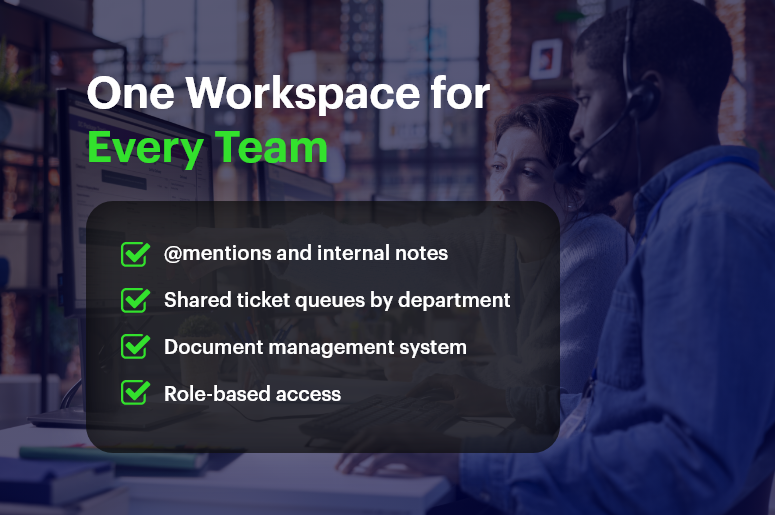In today’s fast-paced business world, unresolved support tickets can cost companies up to 32% of customer churn. Whether you’re juggling customer relationship management software, document control software, or attendance software, a chaotic ticketing process spells frustration for both clients and teams. In this post, you’ll discover ticket management best practices that drive faster resolutions and happier clients. We’ll show you how CRMLeaf’s integrated CRM systems and human resource management systems deliver actionable insights, seamless collaboration, and measurable ROI—no more disconnected tools or inbox overwhelm.
Business Need & Importance
Efficient ticket management is the backbone of any service-oriented business. When support requests pile up, response times lag, and customers feel ignored, loyalty erodes. With an all in one hr software and CRM + ERP solution like CRMLeaf, operations managers and support teams gain a unified view of every interaction — boosting accountability and consistency.
Consider these scenarios:
- A retail chain using human resource management software to track employee schedules struggles to resolve point-of-sale issues before peak hours.
- An IT consultancy relying on siloed spreadsheets finds it hard to update employee profiles when new support staff join the team.
- A healthcare provider juggling document management and compliance queries risks missing critical deadlines without a robust ticketing framework.
By integrating customer relationship management software and document management system capabilities, businesses in retail, IT services, and healthcare can reduce ticket backlog by up to 50% and improve first-contact resolution rates dramatically.

Best Practices & Actionable Tips
Below are key ticket management best practices you can implement today. Each tip ties back to how CRMLeaf’s unified crm systems and human resource software propel you beyond fragmented tools.
Centralize Ticket Intake Channels
- Unified Inbox: Consolidate emails, chat, phone, and social media tickets into one dashboard — no more hunting across platforms for open issues. Every ticket is automatically queued, categorized, and assigned based on priority, reducing manual handoffs and misrouting.
- Self-Service Portal: Empower clients to submit and track requests online, tapping into your document management and legal document management software repositories for instant answers. A well-designed portal cuts down on repetitive queries and frees agents to tackle complex issues.
Prioritize with SLAs and Automation
- Service Level Agreements (SLAs): Define clear response and resolution targets for different ticket categories — technical issues, billing queries, onboarding support. SLAs create accountability and help you measure team performance against cost of payroll services for small business and other financial metrics.
- Automation Rules: Set up smart workflows that escalate overdue tickets, assign high-priority issues to senior agents, and send reminders automatically. Automated routing leverages CRMLeaf’s AI-driven engine to link tickets with the right employee profiles and historical data.
Enrich Tickets with Context
- 360° Customer View: Attach purchase history, support transcripts, and open invoices directly to each ticket — powered by integrated online payroll services or payroll processing companies modules. Contextual data speeds diagnosis and ensures every team member speaks the same language.
- Knowledge Base Integration: Link common solutions from your knowledge library or document repository to relevant tickets. Quick access to FAQ articles and training videos reduces escalations and training costs.
Foster Collaborative Resolution
- Internal Notes & Mentions: Encourage agents to add private comments and tag SMEs (subject matter experts) instead of forwarding attachments via email. This keeps the conversation in one place, eliminating version control issues often seen with stand-alone document management system tools.
- Shared Queues: Create team-based queues for cross-functional issues — e.g., when a support ticket touches both human resource management systems and payroll services for one employee processes. Shared ownership accelerates problem-solving and ensures no ticket slips through the cracks.
Track Metrics and Continuously Improve
- Key Performance Indicators (KPIs): Monitor response time, resolution time, ticket backlog, and customer satisfaction scores. Dashboards in CRMLeaf let you correlate support performance with easy payroll for small business cycles and attendance software usage.
- Post-Resolution Surveys: Automate NPS or CSAT surveys right after ticket closure. Feedback loops help you refine processes and spot training needs early. It is Ideal for companies evaluating best HR software or best customer relationship management software solutions.
Customer Success
For example, BrightWave Logistics, a midsized supply-chain provider, used CRMLeaf’s ticketing module and online payroll services for small business integration. Here’s how they did it:
- They centralized support requests from email and live chat into CRMLeaf’s document control software platform.
- Automated SLA escalations cut overdue tickets by 80%.
- Agents accessed customer employee profiles and billing records in one click. Hence, slashing average handle time from 45 minutes to 20 minutes.
- Post-ticket CSAT rose from 72% to 91% within three months, and payroll reconciliation errors dropped by 35%.
BrightWave achieved a 50% reduction in overall support costs while improving customer loyalty. This highlights the power of an integrated CRM + ERP over disjointed tools.
Key Takeaways
Ticket management best practices aren’t just checkboxes; they’re your pathway to faster resolutions and more delighted clients. By centralizing intake, automating SLAs, enriching tickets with context, fostering collaboration, and tracking performance, you transform your support desk into a strategic advantage.
With CRMLeaf’s unified crm systems and human resource software, you eliminate data silos and empower your teams to deliver exceptional service at scale.

